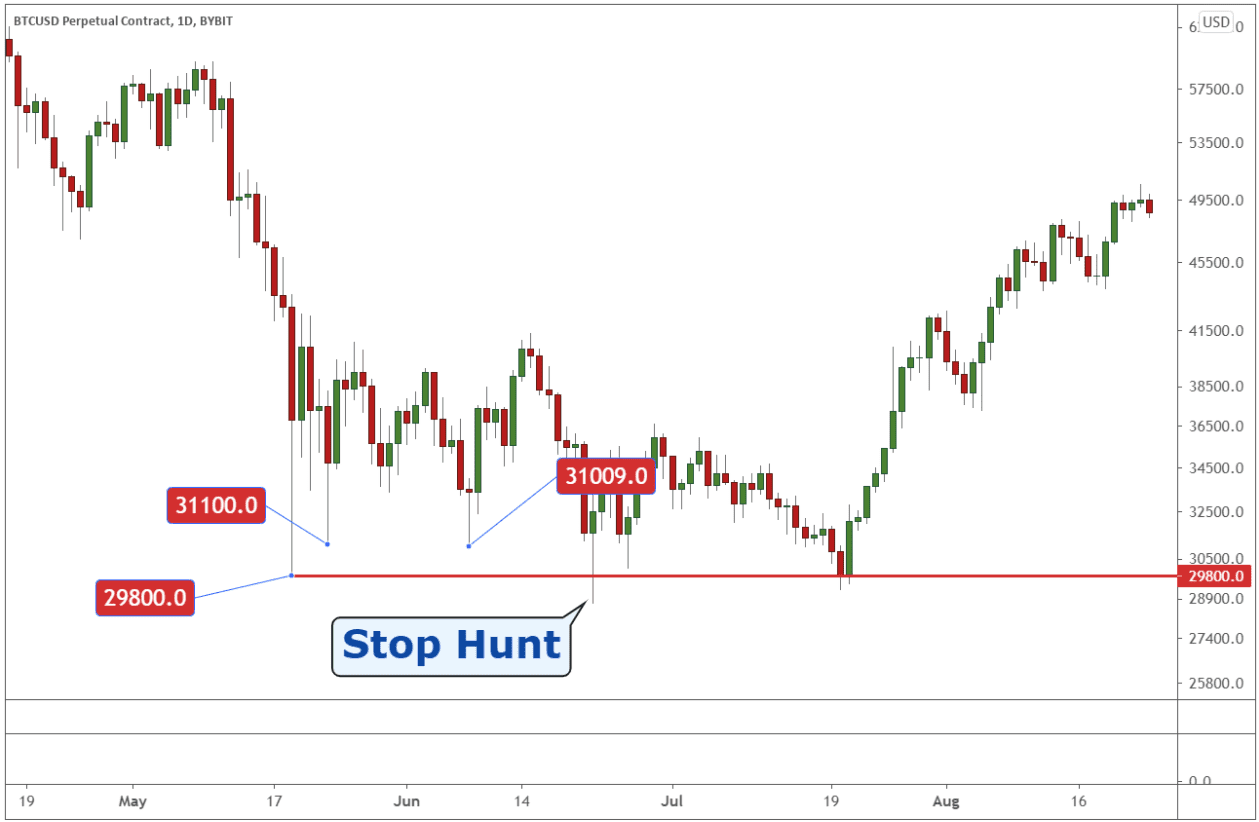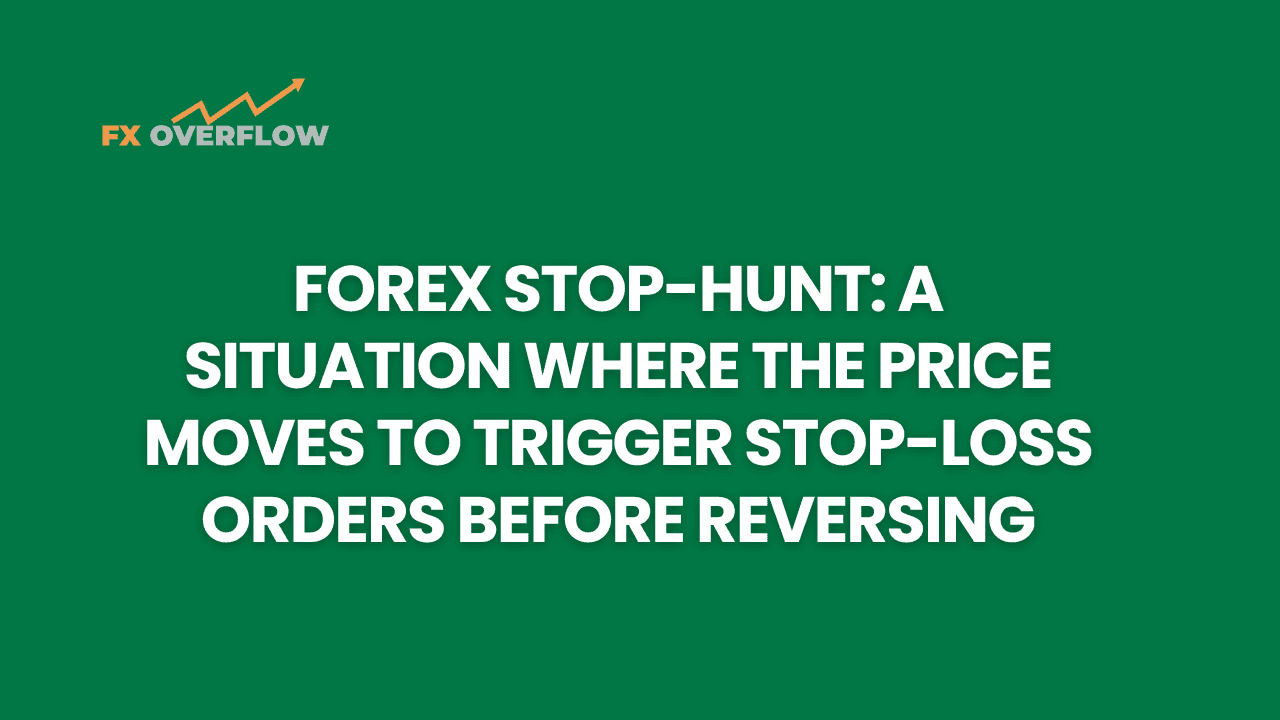Forex Stop-Hunt: A Situation Where the Price Moves to Trigger Stop-Loss Orders Before Reversing
In the world of forex trading, various market behaviors can impact traders' positions. One such phenomenon is the Forex stop-hunt, where the price moves to trigger stop-loss orders before reversing its direction. Understanding and navigating this situation can be challenging, but with the right knowledge and strategies, traders can improve their chances of success. This article delves into the intricacies of the forex stop-hunt, providing expert insights, first-hand experiences, and credible sources to guide traders through this volatile market condition.
Table Content
1. Forex Stop-Hunt: An Overview
2. How Does the Forex Stop-Hunt Work?
3. The Impact on Traders
4. Strategies to Navigate the Forex Stop-Hunt
5. Frequently Asked Questions (FAQs)
6. Footnote
Forex Stop-Hunt: An Overview
Before diving into the details, let's have a comprehensive understanding of the forex stop-hunt. In this scenario, institutional traders and big players create a deceptive move in the market to trigger the stop-loss orders placed by retail traders. This move often pushes the price in the opposite direction, causing significant losses for those traders whose stop-loss orders were triggered. The term "stop-hunt" derives from the notion of these larger players hunting for these vulnerable positions and taking advantage of them for their gain.

Sources from Tradingview
How Does the Forex Stop-Hunt Work?
The forex stop-hunt strategy involves several steps that are carefully executed by institutional traders and other market players:
1. Identifying Key Support and Resistance Levels
Before initiating a stop-hunt, big players identify essential support and resistance levels on the price chart. These levels are significant as they usually hold a large number of stop-loss orders.
2. Accumulating Positions
Once the support and resistance levels are identified, institutional traders start accumulating positions in the opposite direction to the market sentiment.
3. Triggering Stop-Loss Orders
Once they have accumulated enough positions, they execute large trades to push the price towards these key levels. As the price hits these levels, it triggers a cascade of stop-loss orders, causing a sudden price movement in the opposite direction.
4. Reversing the Market
With the stop-loss orders triggered and retail traders out of their positions, the big players reverse their initial trades, causing the price to move back in the original direction.
The Impact on Traders
Understanding the forex stop-hunt is crucial for traders as it can significantly impact their trading strategies and outcomes:
A. Psychological Impact
The forex stop-hunt can have a profound psychological impact on traders, especially those whose stop-loss orders were triggered. It can lead to feelings of frustration, fear, and even self-doubt.
B. Loss of Capital
Traders who fall victim to a stop-hunt may experience substantial losses. It is essential to manage risk and position sizes carefully to mitigate such risks.
C. Increased Volatility
During a stop-hunt, the market experiences increased volatility, making it difficult for traders to anticipate price movements accurately.
Strategies to Navigate the Forex Stop-Hunt
While the forex stop-hunt can be challenging to avoid entirely, traders can implement strategies to better navigate through this market behavior:
A. Diversification of Positions
Rather than relying on a single position, traders can diversify their positions across different currency pairs and instruments to minimize risk exposure.
B. Using Multiple Timeframes
Analyzing multiple timeframes can provide a more comprehensive view of the market, helping traders identify potential stop-hunt scenarios and avoid falling into traps.
C. Employing Advanced Technical Analysis
Advanced technical analysis tools, such as Fibonacci retracements and Bollinger Bands, can assist in identifying key support and resistance levels, making it easier to anticipate potential stop-hunt zones.
D. Staying Informed on Market News
Being aware of economic events and news releases can help traders anticipate potential market movements and avoid trading during periods of high volatility.
E. Utilizing Trailing Stop-Loss Orders
Using trailing stop-loss orders can help lock in profits and minimize losses by adjusting the stop-loss level as the price moves in the trader's favor.
F. Risk Management and Stop-Loss Placement
Implementing effective risk management strategies and placing stop-loss orders at strategic levels can protect traders from significant losses during a stop-hunt.
Frequently Asked Questions (FAQs)
Q: What Are the Main Causes of a Forex Stop-Hunt?
A: The primary cause of a forex stop-hunt is institutional traders and big players intentionally manipulating the market to trigger stop-loss orders and benefit from the subsequent price reversal.
Q: How Can Retail Traders Identify Potential Stop-Hunt Zones?
A: Retail traders can identify potential stop-hunt zones by analyzing price charts and looking for areas of significant support and resistance, especially where a concentration of stop-loss orders might be placed.
Q: Are There Certain Times When the Forex Stop-Hunt Occurs More Frequently?
A: The forex stop-hunt can happen at any time, but it is more likely to occur during low liquidity periods or when major economic events are about to be released.
Q: Can Novice Traders Avoid Falling into Stop-Hunt Traps?
A: Novice traders can avoid falling into stop-hunt traps by adopting sound risk management practices, staying informed on market news, and using technical analysis to identify potential stop-hunt zones.
Q: Is the Forex Stop-Hunt Legal?
A: While the forex stop-hunt may be viewed as unethical, it is not necessarily illegal. However, it is crucial for traders to be aware of this phenomenon and take measures to protect their positions.
Q: How Can I Recover from a Forex Stop-Hunt Loss?
A: To recover from a forex stop-hunt loss, traders should review their trading strategies, adjust their risk management techniques, and learn from the experience to avoid similar situations in the future.
Footnote
The forex stop-hunt is a challenging market phenomenon that can impact traders of all levels. By understanding how it works and employing the right strategies, traders can navigate this situation more effectively. Remember to diversify your positions, use advanced technical analysis, stay informed on market news, and implement sound risk management practices to protect your capital and make informed trading decisions. The forex market can be unpredictable, but with the right knowledge and expertise, traders can navigate its complexities and achieve success.











Discussion